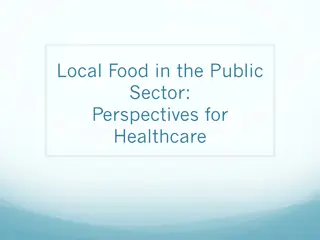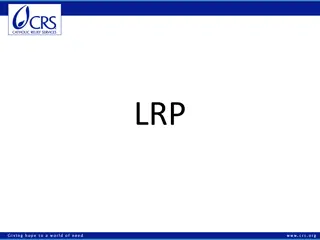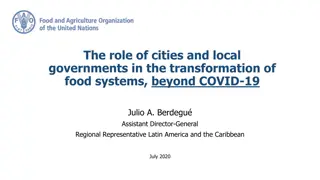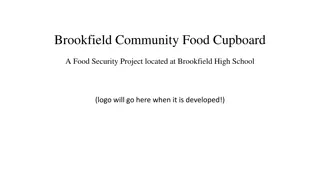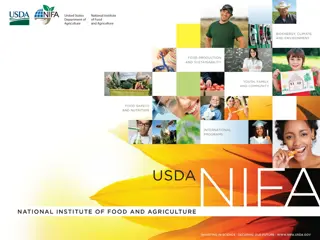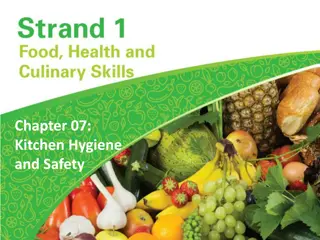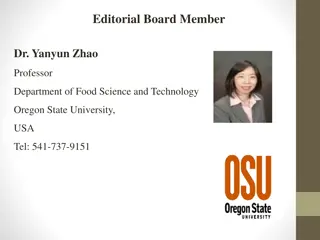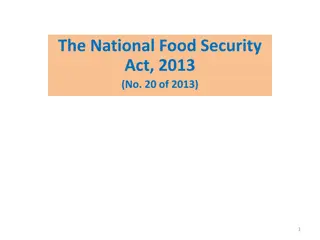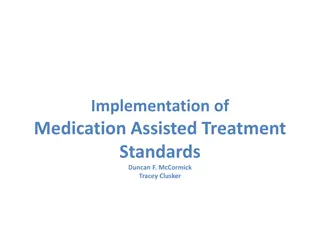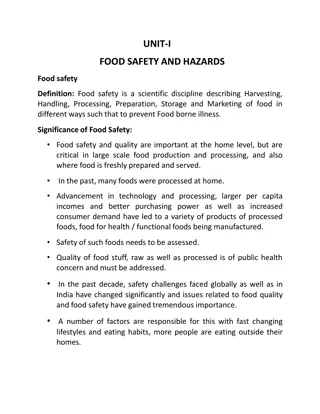Local Food Strategy: Importance, Impact, and Implementation
Exploring the significance of a local food strategy in addressing health, wellbeing, and societal issues. Emphasizing the need for stakeholder engagement, prioritization, and effective governance. Focus on combating childhood obesity, food insecurity, and promoting sustainability in food systems.
Download Presentation

Please find below an Image/Link to download the presentation.
The content on the website is provided AS IS for your information and personal use only. It may not be sold, licensed, or shared on other websites without obtaining consent from the author. Download presentation by click this link. If you encounter any issues during the download, it is possible that the publisher has removed the file from their server.
E N D
Presentation Transcript
Local Food Strategy: Getting Started Kristin Bash Consultant in Public Health, OHID, Y&H Y&H Healthier & Sustainable Food System Network Meeting 09 June 2022
Food Why do we need a strategy? How many health and wellbeing problems are connected to food? Diet-related poor health Childhood obesity Food insecurity Economic resilience Good work Environment and sustainability Food may be at the heart of many big problems our local populations are facing and that makes it central to the solutions.
Obesity in Children Least vs. Most Deprived 2020/21 National Child Measurement Programme 32.10% 35% 30% 25% 19.70% 20% 15.50% 15% 9.10% 10% 5% 0% Reception age children (age 4-5) Year 6 (age 10-11) Least deprived Most deprived Obesity Levels - 2019/20 to 2020/21 National Child Measurement Programme 30% 25% 20% 15% 10% 5% 0% Reception (age 4-5) Year 6 (age 10-11) 2019/2020 2020/21 3
Partners to include at this early developmental stage and further down the line during consultation of the strategy. The scope of the strategy as broad as the National food Strategy? Most important elements? Positioning and Governance of the Strategy What you ve said would be useful Experience and advice on engaging businesses as part of the local strategies Developing local priorities in a way that doesn t over promise. Evaluation measures Managing a diverse range of stakeholder interests both expectations and practically in a Food Summit situation Turning the outcomes of a summit into an engaged and well lead food partnership Getting the right stakeholders involved
Scope and Content of Local Food Strategy The scope of the strategy what to include and how broad to go? Developing local priorities in a way that doesn t over promise. Scope & Content Developing Local Food Strategy Getting the right stakeholders involved o Partners to include at this early developmental stage o Partners to include further down the line during consultation of the strategy. Turning the outcomes of a summit into an engaged and well-led food partnership Evaluation methods Development Engaging Stakeholders Engaging Stakeholders in Local Food Strategy Engaging with businesses as part of the local strategies Managing a diverse range of stakeholder interests both expectations and practically in a Food Summit situation Governance of Local Food Strategy Positioning and Governance of the Strategy Using the right evaluation measures
Scope and Content of Local Food Strategy Scope and Content of Local Food Strategy Two Questions: 1. What are the defined strategic objectives in your area for health and wellbeing? 2. Where do these overlap with food? Healthy food environment local advertising, planning, procurement policies Sustainability Net Zero targets Climate Crisis Household food security Farmers and rural population health Food workers good work Local Resilient Economy Best start in life agenda Inclusion health groups and food healthy diet, food insecurity, good jobs So much more Ultimate goal: weave food-related policy options in all major local strategic plans and documents
It is not easy If it were easy, it would be done already Developing Developing Local Food Local Food Strategy Strategy It is possible you can get it done Don t let good be victim to perfect It s important
2. Strategic Food Review 2. Strategic Food Review To inform development of a long term sustainable food strategy that will link in with other key local policies & strategic objectives. Identify priority areas to inform development of a food action plan Start process of engaging with local stakeholders Identify and map key actors in local area Informal chats describe intent to deliver food strategy, collect scoping info Map of the system where is food policy made in your area? Where are existing links? How long is a piece of string? At the end Short report describing current state of food system, actors, relationships and gaps in these relationships and an overview of key findings. Share with stakeholders involved in review keep the engagement going
2. Assemble Strategy Design Team 2. Assemble Strategy Design Team working group, committee, etc. committee, etc. working group, Counsellor support important at this stage ideally a participant in the design team Propose and agree framework or methodology matter of preference and experience Logic model approach work backwards from where you want to be long term Borrow existing framework e.g., Sustainable Food Places framework Strawperson strategy approach start with something developed elsewhere and pull it apart, put back together to meet local need Identify key principles to guide strategy development, implementation and management E.g., we adopt a universal proportionalism approach whenever possible; we are evidence-led; etc. Produce Strategy Design Document (Strategic Intent; Strategy Development Plan ) Outline framework chosen and core principles Outline process to be used in developing strategy Then the really hard work begins
Sustainable Food Cities Framework Sustainable Food Cities Framework This framework has been used by approximately 50 local food partnerships across the UK to frame their activity when taking a whole food system approach. This framework focuses on six key areas of action: Promoting health and sustainable food to the public Tackling food poverty, diet related ill health and access to healthy food Building community food knowledge, skills resources and projects Promoting vibrant and diverse sustainable food economy Transforming catering and food procurement Reducing waste and the ecological footprint of the food system.
Stakeholder Engagement Stakeholder Engagement Stakeholder engagement Key is to start early in the process even with informal discussions Develop network communicate early and often to keep involved Commit to a Food Summit to kick off the plan Make the case for paid staff a Food Team alongside the governance body / advisory board. Commission the development of a long-term food strategy and 5-year action plan




